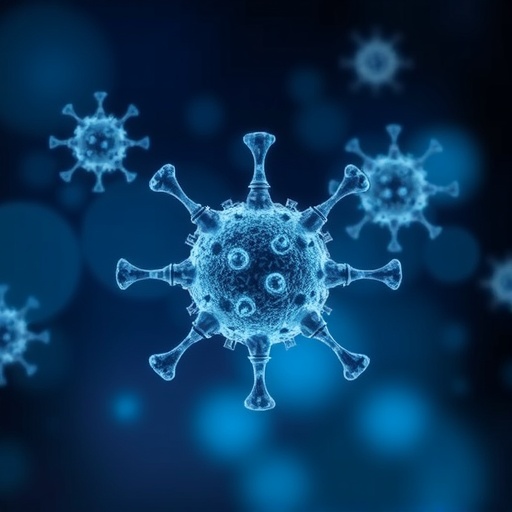Immune checkpoint inhibitors (ICIs) have revolutionized oncology, marking a profound leap forward in cancer immunotherapy. By targeting and blocking inhibitory immune molecules, ICIs restore cytotoxic T-cell activity against tumor cells, contributing substantially to prolonged survival rates in various solid tumors. Since the landmark approval of ipilimumab, the first CTLA-4 (cytotoxic T-lymphocyte-associated protein 4) inhibitor, for advanced melanoma in 2011, the therapeutic landscape has expanded dramatically. Today, ICIs including anti-CTLA-4, anti-PD-1 (programmed death receptor 1), and anti-PD-L1 (programmed death-ligand 1) antibodies serve as frontline or subsequent treatment options for malignancies such as melanoma, non-small cell lung carcinoma, and renal cell carcinoma, underscoring their clinical indispensability.
Despite the unparalleled therapeutic efficacy of ICIs, their use is accompanied by immune-related adverse events (irAEs), which pose a significant clinical challenge. These adverse effects arise from immune system overactivation resulting in autoimmune-like damage across multiple organ systems. The clinical manifestations of irAEs are heterogeneous, both in terms of the affected organs and the temporal dynamics of onset. Commonly involved sites include the skin, endocrine glands, gastrointestinal tract, and pulmonary tissues. Notably, cardiac and neurological toxicities, while less frequent, carry significantly higher risks of mortality and long-term disability.
The clinical heterogeneity of irAEs is mirrored in the differential toxicity profiles of various ICI regimens. Monotherapy with anti-CTLA-4 antibodies tends to provoke colitis, dermatological reactions, and hypophysitis. Meanwhile, therapies targeting PD-1/PD-L1 are disproportionately associated with pneumonitis and thyroid dysfunction. Furthermore, combined blockade of CTLA-4 and PD-1/PD-L1 pathways exponentially elevates the incidence and severity of irAEs, sometimes affecting over half of treated patients. These distinct toxicity spectra emphasize the need for precision approaches to patient monitoring and management.
At the molecular level, irAEs stem from intricate dysregulation within the immunoregulatory network, involving multifaceted interactions among T cells, B cells, cytokines, and the broader immune milieu. Central to this pathophysiology is the aberrant activation of effector T cells coupled with functional exhaustion of regulatory T cells (Tregs), leading to unchecked immune responses. Concurrently, B cell-driven production of autoreactive antibodies exacerbates tissue-specific damage. Dysregulated cytokine networks and pro-inflammatory signaling cascades, often orchestrated by monocytes and macrophages, further amplify immunopathology. These convergent pathways ultimately induce organ-targeted or systemic immune-mediated injury through mechanisms such as cross-reactivity to shared antigens and aberrant immune cell trafficking.
Beyond cellular and molecular factors, irAE risk is dynamically influenced by an array of patient-specific and treatment-related variables. Host characteristics including age, sex, and baseline immune competence significantly modulate immune homeostasis thresholds. The composition and functional state of the gut microbiota emerge as critical determinants, shaping immune responses and potentially tipping the balance toward autoimmunity. Genetic predispositions, particularly polymorphisms in human leukocyte antigen (HLA) loci and other immune-regulatory genes, further define individual susceptibility profiles. Treatment regimens—encompassing drug types, dosage, and combination strategies—exert dose-dependent modulation on toxicity patterns. Tumor-specific factors, including mutational burden and tissue microenvironment, also influence organ-specific vulnerability to irAEs. Additionally, pre-existing autoimmune or chronic inflammatory conditions augment the risk for immune dysregulation during immunotherapy.
The breadth of irAE involvement extends across nearly all organ systems, each manifesting distinct clinical features and necessitating tailored management paradigms. Cutaneous reactions, including rash and pruritus, are among the most prevalent and often serve as early harbingers of immune dysregulation. Gastrointestinal toxicities, particularly colitis, present significant morbidity and may require immunosuppressive interventions. Endocrine irAEs frequently involve thyroiditis and hypophysitis, leading to persistent hormonal deficiencies. Pulmonary complications such as pneumonitis pose substantial clinical concern given their potential severity. Cardiovascular and neurological toxicities, although rare, represent critical complications due to their association with increased mortality. The spectrum further includes rarer toxicities involving hematologic, reproductive, and sensory systems, underscoring the necessity for comprehensive vigilance during ICI therapy.
Contemporary research endeavors are progressively unraveling the immunopathogenic intricacies underlying irAEs, aiming to delineate the nuanced balance between antitumor immunity and autoimmunity. Emerging data highlight differential T cell activation thresholds and patterns of cross-antigen recognition as pivotal determinants separating effective tumor rejection from deleterious tissue injury. Such insights pave the way for individualized modulation of immunotherapeutic regimens, optimizing efficacy while minimizing collateral immune damage.
Advancements in predictive and monitoring technologies are poised to transform irAE management. Integrative approaches leveraging multi-omics analyses, biomarker discovery, advanced imaging modalities, and gene sequencing technologies promise early identification of at-risk patients and real-time surveillance of immune dynamics. These tools hold potential to refine clinical decision-making, enabling preemptive interventions and minimizing overt toxicity.
Future therapeutic strategies aim to harness microbiome regulation and refined combination protocols to mitigate irAE incidence without compromising antitumor responses. Temporally mapping the dynamic interplay between irAEs and therapeutic efficacy will inform dosing strategies such as de-escalation or intermittent administration, cultivating a therapeutic window that balances safety and benefit. Concurrently, novel agents targeting specific irAE mechanisms are under exploration to curtail off-target immune activation, aspiring to establish a new standard in precision immunotherapy.
Ultimately, achieving an optimal equilibrium between immune activation and tolerance represents the cardinal challenge in ICI therapy. Ongoing multidisciplinary efforts integrating immunology, genomics, microbiology, and clinical oncology will be instrumental in realizing personalized treatment paradigms capable of maximizing patient outcomes while minimizing immune-mediated harm. The promise of immunotherapy is thus intricately tied to our evolving understanding of irAEs, making this a frontier of paramount importance in the era of cancer precision medicine.
Subject of Research: Immunotoxicity mechanisms and clinical management of immune checkpoint inhibitor-related adverse events
Article Title: The Evolving Landscape of Immunotoxicity: Charting Mechanisms and Future Strategies for Immune Checkpoint Inhibitor Adverse Events
Web References: http://dx.doi.org/10.1002/mdr2.70019
Image Credits: Anqi Lin, Keyin Zheng
Keywords: Cancer, Immune checkpoint inhibitors, irAEs, Immunotherapy toxicity, CTLA-4, PD-1, PD-L1, Autoimmunity, T cell dysregulation, Cytokine imbalance




